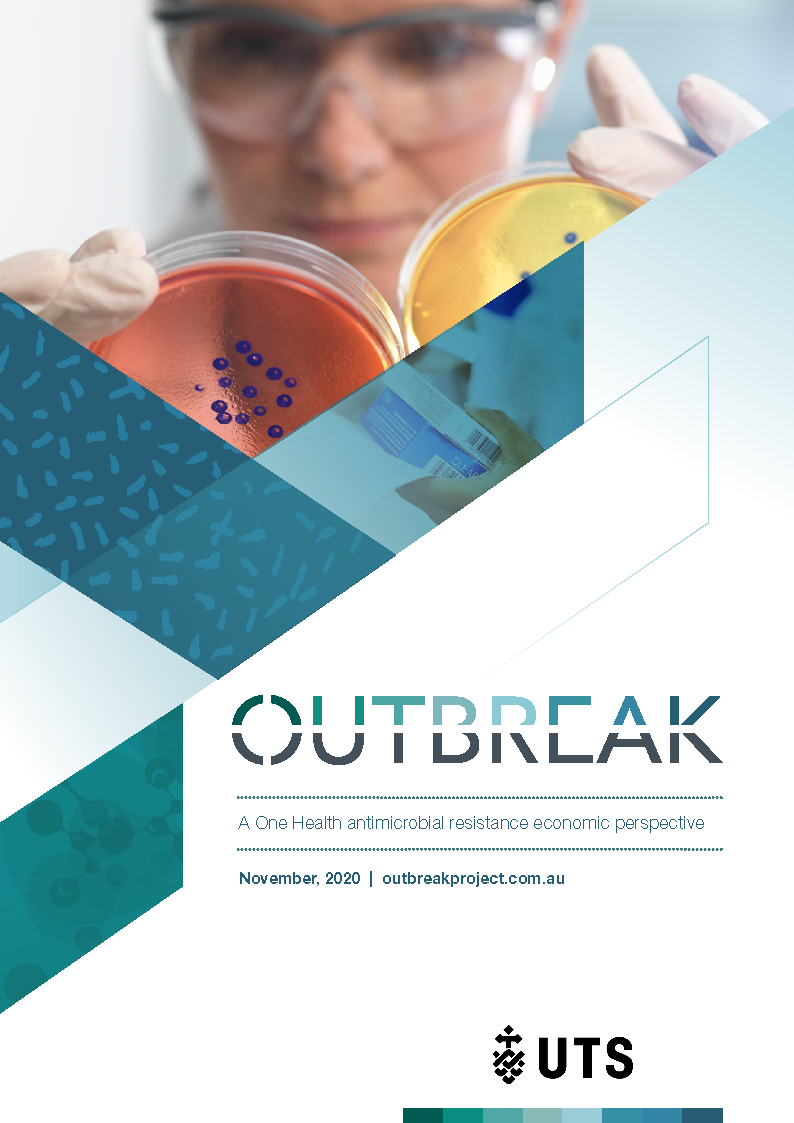A One Health antimicrobial resistance economic perspective
OUTBREAK’s One Health antimicrobial resistance economic perspective reveals the range of socioeconomic impacts of antibiotic resistance in Australia and highlights the value of potential intervention strategies using a One Health approach.
The report focuses on a specific clinical condition – urinary tract infection (UTI) – and the health and economic sequelae of antibiotic resistance. It provides an estimate of the total cost of UTIs to the Australian healthcare system and models a range of scenarios with increasing and decreasing antibiotic resistance levels.
An interactive web-based app has been developed in conjunction with the publication.
This app accompanies the 2020 One Health antimicrobial resistance economic perspective from the OUTBREAK Economics working group.
Objectives
This app estimates the costs to the Australian healthcare system of treating urinary tract infections (UTIs) and how those costs will be affected by changes in resistance to antibiotics commonly used to treat UTIs.
The model relies on real-world patient journey data from 2015-2016, indicating the number of UTI patients presenting at GP surgeries and ED, the number admitted to hospital and the proportion requiring ICU treatment.
We have then projected these costs forward to 2030, accounting for changes in the Australian population, under different resistance scenarios.
Assumptions
In the absence of linked data from GPs, emergency departments, and hospitals, the model makes the following assumptions:
- The majority of patients initially present at the GP and are treated with first-line antibiotics. The probability of resistance (and therefore unsuccessful treatment) is r1
- Some of the patients with resistance proceed directly to the emergency department
- The remainder return to their GP where they receive a different antibiotic. The probability of failure depends on the resistance, r2. Unsuccessfully treated patients also present at the emergency department
- At the emergency department, a certain proportion of patients are admitted to hospital. This proportion remains constant even if the absolute number of patients presenting at the emergency department changes
- Some patients are hospitalised directly (i.e. without passing through the emergency department). We assume that these patients have also not seen their GP and so their numbers are not affected by changing resistance
- Of those patients admitted, a proportion results in transfer to the ICU. Again, this proportion does not change
Explore our Shiny app developed by Dr Jon Brock, and access the full version (with code) here.
This OUTBREAK report is an excellent development for three reasons. First, it applies specific estimates to one country, Australia for the consequences and costs to the economy of one of the major challenges of AMR – UTIs. This could allow a similar process to be done globally or certainly for other countries.
Secondly, as part of the process used, they have outlined an alternative approach to the very macro approach used by the consultants we used at the centre of our AMR Review. Thirdly, and especially pleasingly, what I really love, is that the role of diagnostics is at the centre of their recommended approach to dealing with the UTI challenge, which I have long since argued is quite possibly the single most important way of reducing the inappropriate demand for antibiotics. The authors show persuasively, in a very specific case for a patient, how this can be done.

